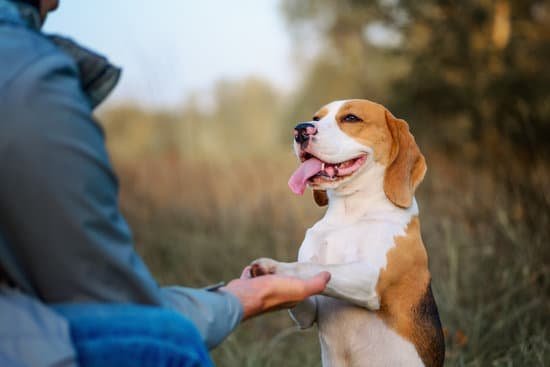Are you considering training your dog to be a protector for defense? In this article, we will explore the important aspects of how to train a dog to attack for defense. Whether you want to ensure the safety of your home or need additional security while out and about, attack training can provide valuable protection in various situations.
When it comes to training your dog for defense, understanding the purpose behind it is crucial. From choosing the right breed to maintaining continued training, each step plays a vital role in ensuring that your dog is prepared and responsible in their protective duties. This article will guide you through the process of training and maintaining a well-rounded defense dog.
Training a dog for attack and defense requires careful attention and dedication, as well as an understanding of the legal and ethical implications. By following the steps outlined in this article, you can build a strong foundation for effective attack training while upholding the responsibilities that come with it. Let’s delve into the key factors that will help you train your dog for defense in a responsible and effective manner.
Choosing the Right Breed for Attack Training
When it comes to training a dog to attack for defense, choosing the right breed is crucial. Not all dog breeds are suitable for attack training, so it’s important to do your research and select a breed that has the natural instincts and physical capabilities for this type of training. Some of the best breeds for attack training include German Shepherds, Belgian Malinois, Rottweilers, and Doberman Pinschers.
These breeds are known for their protective nature, intelligence, loyalty, and ability to be trained effectively. It’s important to note that while these breeds may have the potential for attack training, individual temperament and behavior can vary. This is why it’s essential to work with a professional trainer who can assess your dog’s suitability for attack training and provide guidance on how to proceed.
Additionally, it’s important to consider the legal and ethical implications of owning a dog trained for defense. Certain breeds may be subject to breed-specific legislation in some areas, so be sure to research any local laws or regulations that may impact your ability to train a dog for defense. Responsible ownership and training are crucial when it comes to preparing a dog for defense, so always prioritize the welfare of your dog and those around you.
In summary, choosing the right breed for attack training sets the foundation for successful defense training. Researching potential breeds, consulting with a professional trainer, and considering legal and ethical implications are all important steps in ensuring that you select the right breed and approach this type of training responsibly.
Building a Strong Bond With Your Dog
To build a strong bond with your dog, start by spending quality time together. This can include going for walks, playing games, and engaging in activities that allow you to connect with your dog on a personal level. Positive reinforcement techniques such as praise, treats, and physical affection can also help strengthen the bond between you and your dog.
Furthermore, it is important to be consistent in your interactions with your dog. Consistency in training methods, rules, and expectations will help establish a clear understanding between you and your dog. Dogs thrive on routine and structure, so establishing a consistent daily routine can also contribute to building a strong bond.
Ultimately, building a strong bond with your dog should be based on mutual trust, respect, and understanding. It is the key foundation that will make the process of attack training more effective and meaningful for both you and your canine companion.
In teaching how to train a dog to attack for defense breed standard; it takes patience, commitment and the right approach based on mutual trust, respect ,love ,understanding all these work together make the process of attack training more effective.
Therefore high level of commitment from both owner this would get great response from the animal i.e; it may already have naturally good protective instincts or could have some natural aggression towards new people or suspicious thus require less intensive defensive fostering than others innate qualities needed but must be fostered due no innate tendencies toward aggression or protectiveness requires extensive fostering.
Basic Obedience Training
Establishing Trust and Communication
Before diving into attack training, it is crucial to first ensure that your dog has a strong foundation in basic obedience. This includes commands such as sit, stay, come, and heel. Through these commands, you establish trust and communication with your dog, laying the groundwork for more advanced training.
It is essential to be patient and consistent when teaching basic obedience. Use positive reinforcement techniques such as treats and praise to encourage your dog to follow commands. Consistency is key – make sure to use the same verbal cues and hand signals each time you give a command.
Socialization and Desensitization
Socialization plays a crucial role in obedience training. Expose your dog to different environments, people, and animals to help them become well-rounded and less likely to react aggressively out of fear or anxiety. Additionally, desensitization exercises can help your dog remain calm in potentially stressful situations.
During obedience training, focus on desensitizing your dog to various stimuli such as loud noises, sudden movements, and unfamiliar objects. Gradually introduce these elements while reinforcing calm behavior through positive reinforcement.
Building Self-Control
Teaching self-control is another key aspect of basic obedience training. Teach your dog impulse control by using exercises that require them to wait for a release command before moving or eating. This self-control will be critical when transitioning into attack training, as it helps the dog understand when it is appropriate to use their defensive skills.
By establishing strong basic obedience skills in your dog, you are setting a solid foundation for more advanced attack training techniques. Remember that patience, consistency, and positive reinforcement are essential components of successful basic obedience training for defensive purposes.
Advanced Attack Training Techniques
Once your dog has mastered basic obedience training, it’s time to move on to advanced attack training techniques. One crucial aspect of this is teaching your dog to distinguish between friend and foe. This is essential for ensuring that your dog only attacks when necessary for defense, and not at every perceived threat.
One effective technique for teaching this distinction is through socialization. Exposing your dog to a wide variety of people in different situations can help them learn to differentiate between friendly strangers and potential threats. This can be done by taking your dog on walks in busy public areas, enrolling them in group training classes, or inviting friends and family over regularly.
Another important aspect of teaching your dog to distinguish between friend and foe is through positive reinforcement. When your dog behaves appropriately around strangers or familiar faces, be sure to reward them with treats, praise, or playtime. Similarly, if they show signs of aggression towards someone they should recognize as non-threatening, use redirection techniques and reinforce the appropriate behavior.
Finally, it’s important to remember that while attack training is focused on defending against potential threats, it’s equally important to teach your dog when not to attack. This includes recognizing commands that signal they should stand down or cease aggressive behavior. Doing so will ensure that your dog’s attack training is responsible and effective.
| Techniques | Importance |
|---|---|
| Socialization | Teaches dogs how to differentiate between friendly strangers and possible threats. |
| Positive Reinforcement | Rewards appropriate behavior around strangers or familiar faces. |
| Recognizing Commands | Taught dogs when not to attack by recognizing commands signaling they should cease aggressive behavior. |
Commanding Your Dog
As you begin to train your dog for defense, it is crucial to understand the importance of teaching effective attack commands. These commands are essential in guiding your dog’s behavior and ensuring that they only attack when necessary. By mastering these commands, you can have greater control over your dog’s actions and prevent any unintended aggression.
Here are some key tips for teaching effective attack commands:
- Start with basic obedience training: Before diving into attack commands, ensure that your dog has mastered basic obedience training. This includes commands such as sit, stay, and come. A well-behaved dog is more likely to understand and follow attack commands.
- Use consistent verbal cues: Choose specific words or phrases that will signal your dog to attack. It’s important to use the same cues consistently so that your dog can easily understand what is expected of them.
- Pair verbal cues with hand signals: In addition to verbal cues, consider incorporating hand signals into your attack commands. This provides another layer of communication and allows you to give commands non-verbally if necessary.
By implementing these techniques, you can effectively train your dog to understand and respond to attack commands in a controlled manner. Remember that responsible training is crucial when teaching your dog how to defend against potential threats.
Ultimately, the goal of teaching effective attack commands is not just about aggression, but about providing a sense of security and protection for yourself and your loved ones. With proper training and consistent reinforcement, you can ensure that your dog is equipped to defend when needed while still being a well-behaved member of the family.
Understanding the Legal and Ethical Implications of Attack Training
Training a dog to attack for defense is a serious commitment that comes with legal and ethical responsibilities. It is important for dog owners to understand the implications of attack training to ensure that they are acting within the boundaries of the law and ethical guidelines.
Legal Regulations
Before embarking on attack training with your dog, it is essential to familiarize yourself with the legal regulations in your area regarding owning and training guard or attack dogs. Some jurisdictions may have specific laws governing the ownership and training of such dogs, including requirements for obtaining a special license or certification. It is crucial to comply with these regulations to avoid legal repercussions.
Liability
One must also consider liability when training a dog to attack for defense. Owners are responsible for their dog’s behavior, and if an attack occurs, they may be held liable for any injuries or damages caused. It is important to take measures to prevent situations where the trained defense dog could cause harm unlawfully.
Ethical Considerations
In addition to legal ramifications, there are ethical considerations when training a dog for defense purposes. Owners must ensure that the use of force by their trained dogs is justified and in line with ethical standards. This includes using attack commands responsibly and only in situations where there is a genuine threat to safety.
Understanding the legal and ethical implications of attack training is crucial in ensuring responsible ownership of guard or attack dogs, promoting safety, and preventing potential legal issues. It is imperative for dog owners considering this type of training to seek expert guidance and resources on navigating these complex matters while prioritizing safety and responsibility.
Maintenance and Continued Training
For many dog owners, the decision to train their dog for defense is a serious and important one. Once you have gone through the initial stages of attack training with your dog, it is crucial to continue maintenance and continued training in order to keep your dog sharp and prepared for defense at all times.
One important aspect of maintenance and continued training for defense is regular physical exercise. Dogs who are trained for defense need to be in peak physical condition in order to perform their duties effectively. This means regular walks, runs, and playtime, as well as engaging in activities that will keep your dog fit and agile. Regular exercise not only keeps your dog physically fit but also mentally stimulated, which is crucial for maintaining their sharpness and readiness for defensive tasks.
Another important aspect of maintenance and continued training is regular practice of attack commands. Consistent practice of attack commands such as “attack” and “release” will help reinforce your dog’s understanding of when and how to act defensively. It is important to regularly practice these commands in a variety of settings and scenarios in order to ensure that your dog can respond effectively when it matters most.
| Aspect of Maintenance | Description |
|---|---|
| Physical Exercise | Dogs need regular walks, runs, playtime, and challenging physical activities. |
| Regular Practice of Attack Commands | Consistent practice reinforces understanding of when and how to act defensively. |
Conclusion
In conclusion, learning how to train a dog to attack for defense is a serious and important endeavor that requires dedication, patience, and responsibility. It is essential to understand the purpose of attack training and to recognize that this type of training should only be undertaken for legitimate defense purposes.
Choosing the right breed for attack training is crucial, as not all dogs are suitable for this kind of work. Building a strong bond with your dog is the foundation of any successful attack training program.
Furthermore, basic obedience training is an essential first step in preparing your dog for advanced attack training techniques. Teaching your dog to distinguish between friend and foe, as well as commanding your dog with effective attack commands, are skills that require time, effort, and expertise in animal behavior. It’s also important to be aware of the legal and ethical implications of attack training, ensuring that you are abiding by all laws and regulations regarding owning an attack-trained dog.
Lastly, maintenance and continued training are necessary to keep your dog sharp and prepared for defense. Regular practice will help ensure that your dog is responsive and reliable in a defensive situation. By following these guidelines and approaches outlined in this article, you can successfully train your dog to be an effective defender while being responsible and ethical in the process.

Welcome to the blog! I am a professional dog trainer and have been working with dogs for many years. In this blog, I will be discussing various topics related to dog training, including tips, tricks, and advice. I hope you find this information helpful and informative. Thanks for reading!





